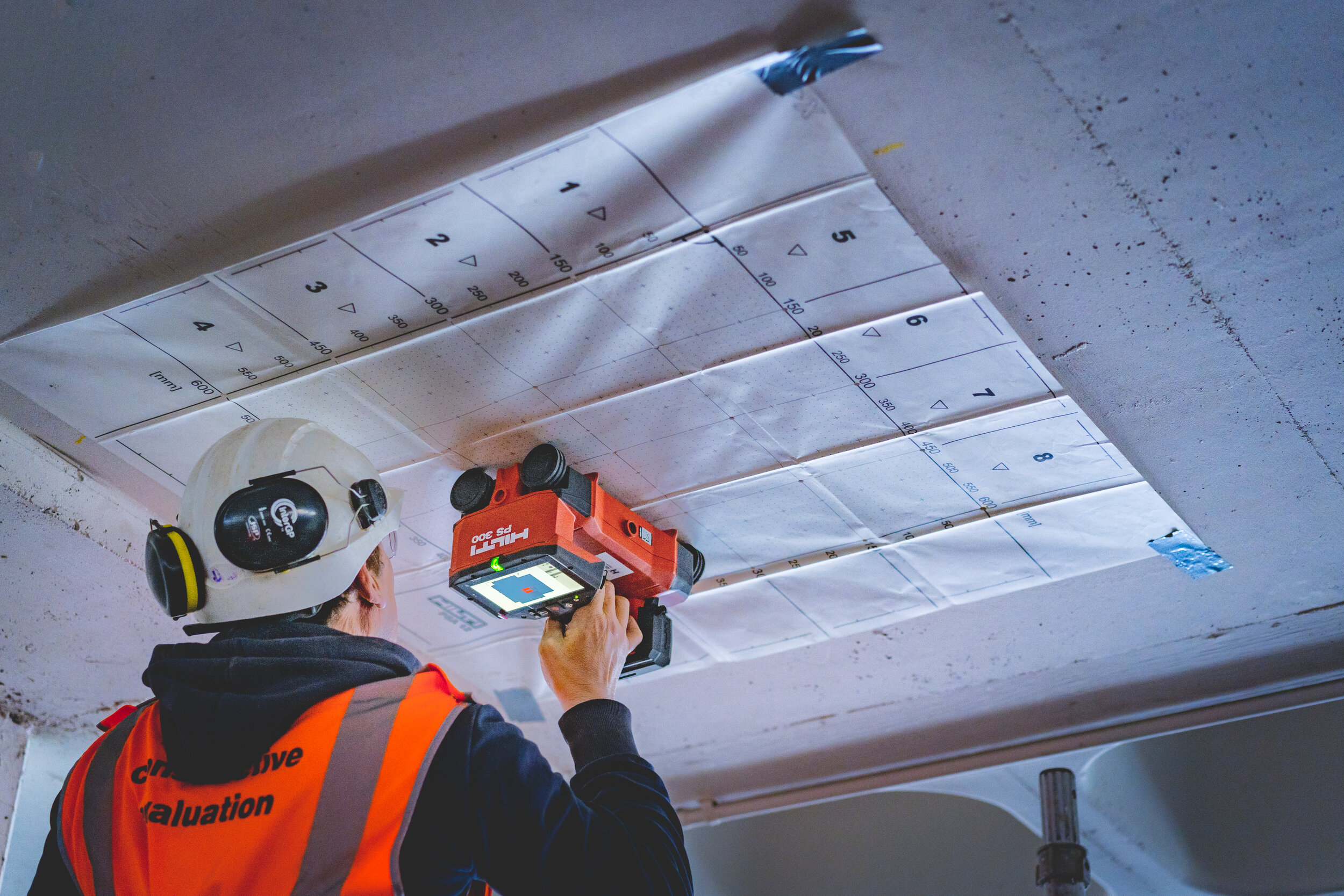Improve Your Task with RainierGPR Concrete Scanning Services
Improve Your Task with RainierGPR Concrete Scanning Services
Blog Article
Checking Out the Key Benefits of Concrete Scanning in Building And Construction Projects
In the realm of modern-day construction practices, the application of concrete scanning innovation has actually emerged as a pivotal device for making certain job performance and architectural honesty. From enhancing security measures to precisely discovering energies hidden under the surface, the advantages of concrete scanning are multifaceted. RainierGPR Concrete Scanning.
Improved Safety Procedures
Making use of advanced concrete scanning innovation enhances safety and security procedures on building and construction websites by providing accurate detection of prospective hazards hidden below the surface. This technology allows building teams to identify rebar, conduits, post-tension cable televisions, and other blockages prior to excavation or exploration, dramatically minimizing the danger of mishaps. By identifying these components precisely, workers can prevent damaging crucial architectural elements, hence stopping injuries, hold-ups, and expensive repair work.
Moreover, concrete scanning plays an essential duty in making sure the integrity of existing frameworks throughout developments or improvements. By discovering weak points, spaces, or wear and tear within concrete aspects, designers can attend to these problems proactively, boosting the overall safety and security and long life of the structure. This proactive strategy not only alleviates the risk of architectural failures however likewise minimizes the possibility for mishaps triggered by unpredicted structural shortages.
Essentially, the execution of concrete scanning modern technology offers as a proactive safety measure that safeguards both building and construction workers and the structural honesty of buildings, eventually adding to the total success and effectiveness of construction jobs. - RainierGPR Concrete Scanning
Accurate Detection of Energies
Concrete scanning innovation facilitates specific identification of underground utilities, improving building and construction site security and effectiveness. Exact discovery of utilities is crucial in building jobs to stop pricey damages, task hold-ups, and most importantly, make sure the safety and security of employees and the public. By utilizing advanced scanning technologies such as ground-penetrating radar (GPR) and electromagnetic induction, building and construction teams can map out the location of buried pipelines, cable televisions, and various other energies with high levels of accuracy.

Time and Expense Performance

Concrete scanning technology allows construction groups to properly locate rebar, post-tension wires, and various other embedded objects within concrete frameworks. This precise details assists in staying clear of expensive errors such as unexpected damages to vital components during drilling, reducing, or coring tasks. Additionally, by identifying potential threats beforehand, the need for costly fixings or remodel due to damages can be lessened, resulting in cost savings for the task.

Additionally, the capability to quickly and properly detect energies under the surface area without causing any kind of damage not only saves time however likewise stops anonymous pricey disturbances to existing facilities. Overall, the time and cost effectiveness benefits of concrete scanning make it a very useful device for boosting construction task monitoring and execution.
Preservation of Architectural Honesty
Maintaining the architectural honesty of structures and facilities is extremely important in making certain lasting stability and security. Concrete scanning plays a critical duty in this preservation procedure by permitting building professionals to determine prospective risks to the structural stability of a structure or facilities before they escalate into significant problems. Through the usage of sophisticated scanning modern technologies such as ground-penetrating radar (GPR) and electro-magnetic induction, building groups can non-invasively evaluate the problem of concrete frameworks, find rebar, post-tension wires, and other ingrained aspects, and determine any kind of spaces, cracks, or deterioration within the concrete.
Improved Project Planning
In order to ensure the effective implementation of construction jobs, meticulous focus to information and comprehensive preparation are crucial elements that come from a thorough understanding of the structural problems determined through concrete scanning. Improved task planning, promoted by concrete scanning, allows construction teams to try here preemptively address prospective challenges, allocate resources more efficiently, and establish practical timelines. By precisely recognizing the area of rebar, post-tension cords, and various other ingrained objects within concrete structures, project managers can create much more exact building and construction plans that lessen the risk of expensive mistakes or hold-ups. In addition, the information obtained from concrete scanning allows stakeholders to make educated choices relating to architectural modifications, restorations, or developments, causing smoother task transitions and boosted total task outcomes. Ultimately, incorporating concrete scanning into the project planning phase enhances sychronisation amongst employee, promotes proactive problem-solving, and contributes to the successful delivery of construction projects within budget and timetable restrictions.
Conclusion
To conclude, concrete scanning supplies many benefits in construction tasks. By improving security actions, precisely finding utilities, enhancing time and price effectiveness, preserving architectural honesty, and assisting in job planning, concrete scanning confirms to be a necessary device for successful task implementation. Its capacity to minimize dangers, increase performance, and make sure job integrity makes it an essential property for construction professionals.
In the world of modern building and construction techniques, the use of concrete scanning technology has actually emerged as a pivotal tool for making sure project effectiveness and structural integrity.Concrete scanning innovation enables building teams to properly find rebar, post-tension wires, and other ingrained see this page items within concrete frameworks. Through the use of advanced scanning technologies such as ground-penetrating radar (GPR) and electromagnetic induction, building and construction teams can non-invasively analyze the problem of concrete frameworks, locate rebar, post-tension cable televisions, and various other embedded aspects, and recognize any kind of voids, splits, or wear and tear within the concrete.
In order to make certain the effective implementation of building tasks, thorough attention to information and detailed preparation are important components that stem from a comprehensive understanding of the structural conditions determined with concrete scanning. Eventually, incorporating concrete scanning into the project planning stage improves sychronisation among group participants, fosters positive analytical, and contributes to the successful distribution of building and construction tasks within spending plan and routine restraints.
Report this page